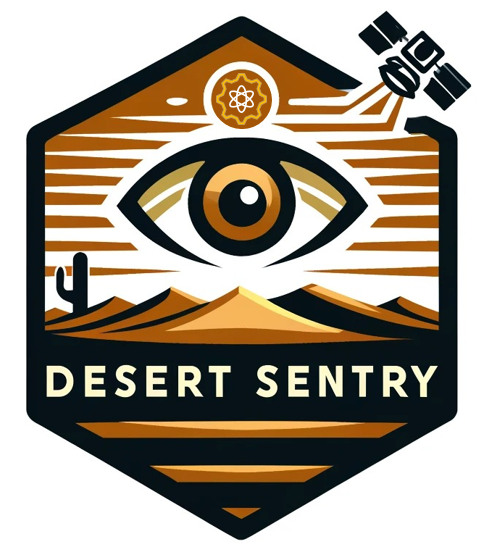CENTCOM Desert Sentry
The Chief Digital and Artificial Intelligence Office (CDAO), in collaboration with CENTCOM, is seeking demonstrations for commercial platforms to enable DoD personnel to rapidly create and maintain computer vision (CV) capabilities.
Computer Vision Defense Commercial Solutions Opening (CSO) General Solicitation
Demonstrations of Innovative Commercial Technologies
Implemented by Class Deviation 2022-O0007
INNOVATIVE COMMERCIAL DEMONSTRATION SUMMARY

Computer Vision
The Chief Digital and Artificial Intelligence Office (CDAO) is seeking demonstrations for commercial platforms to enable DoD personnel to rapidly create and maintain computer vision (CV) capabilities. Intended applications include automated detection and identification of features in imagery and video collected by spaceborne, airborne, and land/sea-based sensors. Desired solutions will support the following supervised learning functions:
- IMAGERY/VIDEO INGEST – The capability must support manual and batch ingest of data from local or cloud data stores, inclusive of pertinent domain metadata (e.g., collection timestamp, sensor details, image processing details, geotags, content tags, synthetic content tags, etc).
- BATCH DATA PREPARATION – Example functions include spatially-subdividing large images or temporally-subdividing videos for labelling purposes.
- LABELED DATA SET INGEST – The capability must support ingesting existing labeled data sets, provided they conform to common labeled data set standards (e.g., COCO).
- CV TASK AND ONTOLOGY GENERATION – CV tasks include classification, as well as single- and multi-class object detection and instance segmentation for imagery and video.
- LABELING – The capability must manage distributed workforce labeling and secondary quality reviews. An optional, yet highly desirable, feature is incorporation of novel methods to enhance labeling efficiency. Examples include pre-labeling (i.e., machine-generated labels) and machine-assisted labeling (e.g., human-generated point automatically converted to polygon).
- AUTOMATED LABEL AUGMENTATION – The capability must boost the size of a labeled dataset through intelligent batch transformations thereof (e.g., mitigate class imbalance).
- AUTOMATED MODEL TRAINING – Model training must flexibly utilize cloud or on-prem GPU compute resources.
- AUTOMATED MODEL SCORING – Performance scoring must be based on industry standard CV metrics (e.g., F1, precision, recall), contrasting findings from test and validation (i.e., withheld from training) sets.
- MODEL CONTAINERIZATION – The capability must export a containerized model, inclusive of the model network, weights, and supporting metadata for traceable provenance. The containerized model must be fully viable as an air-gapped capability, with zero external system dependencies.
In addition to interacting with the above functions via a consolidated web UI, programmatic interaction via open Application Programming Interfaces is also required. As such, there are two target user demographics.
- Respectively, the primary user demographic consists of DoD analysts and operators with mission-related subject matter expertise (i.e., not traditional CV developers), warranting an intuitive, streamlined UI/UX. This enables scale while bolstering user adoption.
- Data scientists and infrastructure engineers will have a role in deploying, maintaining, and ensuring interoperability of the CV platform as part of a larger digital enterprise, to include cloud-based and on-premises networks.
The goal for this effort is to enable DoD warfighters to create performant CV models in 7 days or less via an integrated, self-service platform. If successful, this process will complement existing CV development programs of record focused on model performance optimization.
Counter UAS
The cUAS section is under development and will be updated in the coming months.
In this context, “innovative” is defined as any commercial product, technology, service, and/or any application of an existing commercial product, technology or service that have the potential to fulfill requirements, close capability gaps, or provide potential technological advancements for the Department of Defense. This may include any novel process, practice, methodology, or application of the preceding items to a new mission domain.
Under a CSO, DoD may competitively select solutions received in response to a general solicitation, similar to a broad agency announcement. Use of a CSO in accordance with this Class Deviation 2022- O0007 is considered to be a competitive procedure for the purposes of 10 U.S.C. chapter 221 and Federal Acquisition Regulation (FAR) 6.102. As a result of the competitive processes used under this CSO Announcement, multiple awards of various demonstrations may be executed. Awards executed from this CSO competitive process may include, but are not limited to, a FAR based contract and/or an Other Transaction Agreement (OTA).
Under the authority of 10 U.S.C. 4022, the CDAO may desire to award an other transaction agreement to carry out prototype project(s) that are directly relevant to enhancing the mission effectiveness. This general solicitation satisfies the requirement to compete to the maximum extent practicable pursuant to 10 U.S.C. 4022(b). As such, responses to this general solicitation have the potential for follow-on other transactions in accordance with 10.U.S.C. 4022(f).
View Opportunity/Submit Response
Helpful Links
Appendix 001: Evaluation Rubric (PDF)
